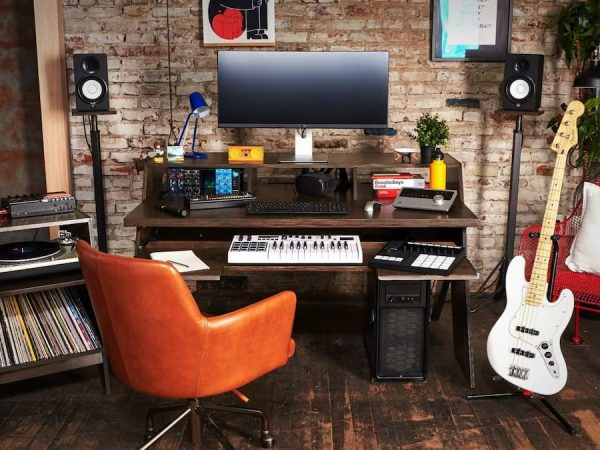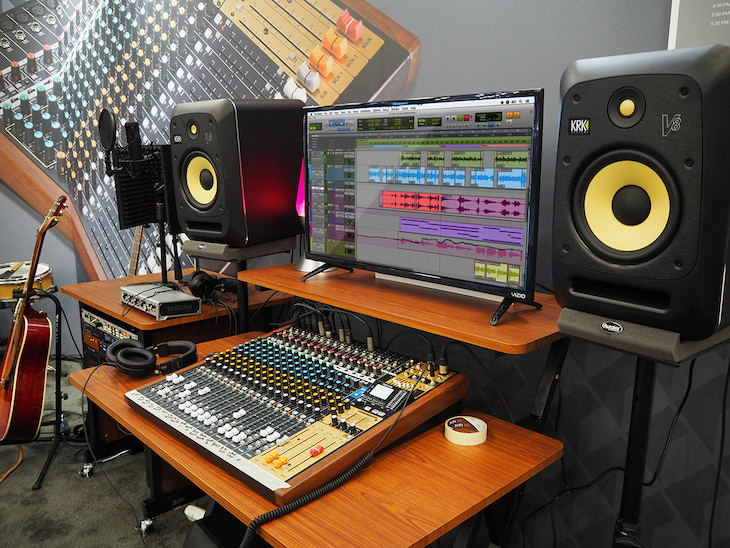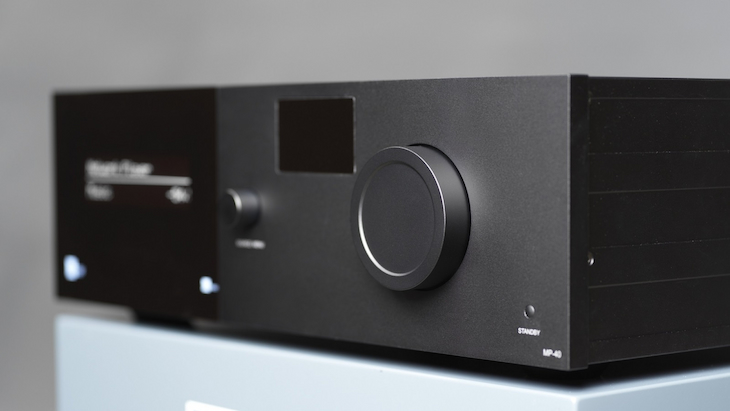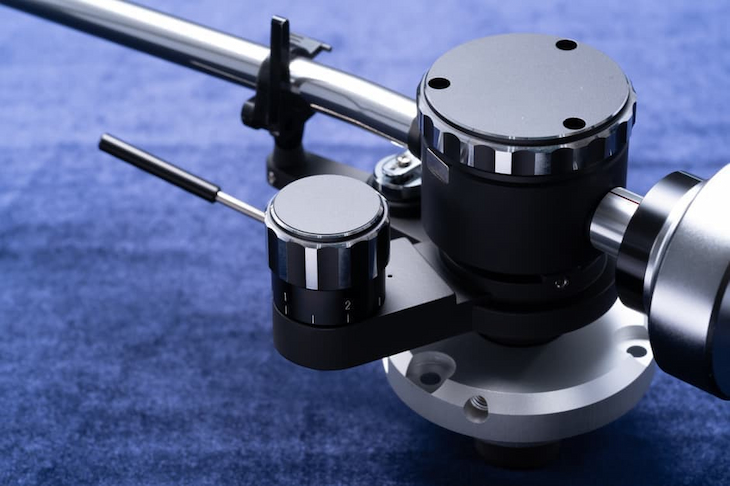19
Aug

Are you musically inclined and want to take your talent to the next level? Don’t want to leave your house to go to a recording studio? As tricky as it may seem, you can actually set up your own professional music studio in the comfort of your own home without breaking the bank.
Sure, it may not be as grand and luxurious as the professional ones, but with the proper equipment and know-how, you can create high-quality tracks that rival those of your favourite artists and classic albums.
While the specifics may differ depending on the kind of music you want to create, there are several key pieces of equipment that are essential for any home studio. You may already have some of these lying around, but for the rest, you’ll need to make a few investments.
Since sound is such an important part of music, you’ll need speakers that can accurately reproduce audio without adding any distortion or colouration. Even the slightest change in sound can alter the entire mood and feel of a track, so you’ll want to make sure that your speakers are up to the task.

Commonly referred to as pro studio monitors in the industry, these loudspeakers emit an accurate, well-balanced sound that serves as the groundwork for mixing and mastering audio. The audio range of these speakers is also wider than that of regular home theatre systems, which means you’ll be able to hear even the smallest details in your music.
In general, the higher the hertz (Hz) number, the better. Most pro studio monitors on the market have a frequency response of around 50Hz to 20kHz, but you may be able to find some that go as high as 30kHz or even 40kHz. The former is more than sufficient for most music genres, but if you’re looking to create electronic or dance tracks, the latter would be a better option.
In any case, these models have come down in price considerably over the years, so you shouldn’t have too much trouble finding a pair that fits your budget. Even those with high-frequency responses can be found at an affordable price if you know where to look.
Keep in mind that they’re somewhat larger and heavier than regular speakers, so you’ll need to make sure that your desk or stand can accommodate them. Putting them in an elevated position will also improve the sound quality, so you might want to go down that route if possible.
While most studio monitor speakers these days have built-in amplifiers, you’ll still need an external one if you want to get the most out of them. These devices provide the power needed to produce loud, clear sound without distortion. The power output is measured in watts per channel (WPC), and the higher the number, the louder your speakers will be able to go.
For most music genres, anything above 100WPC is more than enough. If you’re into electronic or dance music, however, you’ll need an amplifier with a power output of at least 200WPC. Anything less than that will result in sound that’s tinny and lacking in bass.
These are essentially preamp/equalisers (EQs) on steroids. Basically, they take the place of a mixer by allowing you to control the level and EQ of each individual track. This is extremely useful for those who are looking to create more complex arrangements with multiple layers of sound.

AV processors come with a variety of features, so you’ll need to decide which ones are most important to you. For instance, some models come with built-in effects that can be applied to individual tracks, such as reverb, delay, and chorus. Others have USB ports that allow you to connect them directly to your computer for easy recording and playback.
Also known as digital streamers, these devices allow you to play music from a variety of sources, such as your computer, phone, or tablet. They usually come with their own apps that let you control the playback and volume remotely.
Some hi-fi streamers even come with built-in storage, so you can save your favourite tracks and albums directly on the device. This is especially handy if you don’t want to clutter up your phone or tablet with a bunch of music files.
Turntables convert the vibration of a spinning record into an electrical signal that can be amplified and played through speakers. They come in two main varieties: direct drive and belt drive.
Direct drive turntables have a motor that’s attached directly to the platter, which spins the record. This kind of device is usually favoured by DJs because it’s more durable and can start and stop the platter more quickly.
Belt drive turntables, on the other hand, have a motor that’s mounted separately from the platter. A belt connects the two components, which causes the platter to spin. Belt drive turntables are typically used by audiophiles because they produce less noise and vibration.
The tonearm is the part of the turntable that holds the needle, or stylus. It’s usually made of metal, and it’s balanced so that the needle can ride smoothly across the record without damaging it.

You can choose between two basic kinds of tonearms: manual and automatic. Manual tonearms require you to lift and lower the needle onto the record yourself, while automatic ones do it for you. Both types have their own pros and cons, so it’s really a matter of personal preference.
As with any electronic setup, proper cable management and data connections are crucial to maintaining a clean, professional-looking studio. These days, there are all sorts of products available to help you keep your cables tidy and organised.
For example, you can get adhesive-backed cable ties that you can use to group together similar cables. Or, you can invest in a cable management system that lets you run your cables through a series of channels and covers.